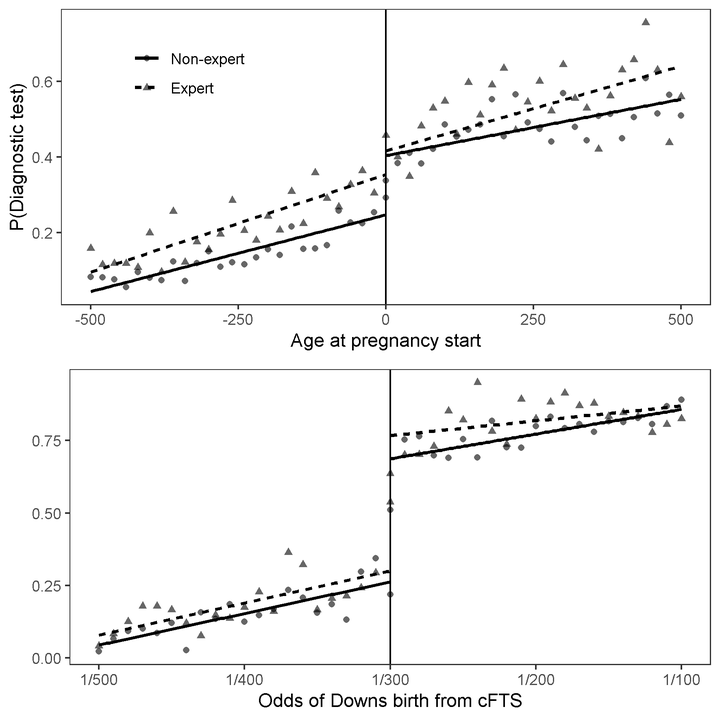Do the guidelines apply to me?
Patient information and physician agency in prenatal diagnostics

Background Patients who themselves have medical expertise have been found to receive care that is systematically different from care provided to non-expert patients. However, the current literature has been unable to ascertain whether the differences are due to expert patients sending less noisy signals about their preferences or health state than non-experts (statistical discrimination theory) or whether experts use their informational advantage to demand better care than non-expert patients (agency discrimination theory).
Aim We investigate the extent to which care provided to medically trained mothers is more likely to bypass clinical guidelines intended to ration access to prenatal diagnostic testing (PDT) compared to not medically trained mothers. Moreover, we examine whether a change in guidelines affected the differences in care offered to expert and non-expert patients.
Methods We use a differences-in-discontinuities design to estimate the difference in the use of PDT between expert and non-expert mothers on the margin of a guideline threshold. We measure baseline preferences as the difference above the threshold, where all patients are offered PDT. Controlling for this baseline difference in preferences, we estimate expert “overuse” as the difference in the differences above and below the threshold. Prior to 2004, the threshold was age based (35 years) and after 2004 risk based (risk >1:300). We use exact matching to compare mothers with similar levels of education and income levels.
Data Linked Danish administrative data on the use of PDT, age, gender, ethnicity, education, and family income from 51,204 mothers aged 33-37 giving birth from 1996 through 2002 and 23,211 mothers giving birth from 2008 through 2018.
Results We find a 7.4 percentage points overuse difference between expert and non-expert mothers when the age-based threshold applied. Overall, 70% of the difference in PDT is due to expert “overuse”. Expert and non-expert patients have similar test-rates above the threshold, indicating that the differences below the threshold are not driven by differences in preferences. After the risk-based threshold was introduced, the difference in PDT almost disappears.
Conclusion In a national health service where maternity care is free at the point of delivery, but rationed by clinical guidelines, expert mothers bypass guidelines intended to limit access to costly prenatal diagnostic testing indicating that the difference in care between experts and non-expert motherss is due to agency discrimination.